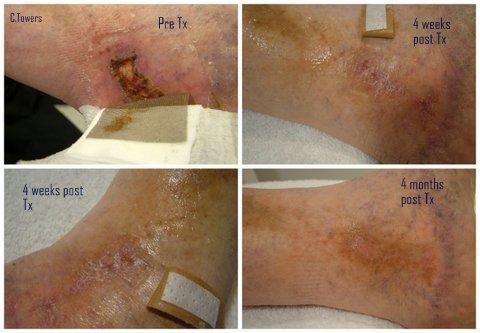Venous Leg Ulcers
Patients coming to Palm Clinic regarding their varicose veins are often concerned that they may develop a venous leg ulcer. They recall an older relative “who used to have awful legs with ulcers, and I do not want that”.

The most common causes of any lower leg ulcer are venous hypertension, arterial disease, neuropathy (often associated with diabetes), pressure injury and ischaemia (poor blood supply)
Venous leg ulceration is a debilitating chronic condition that affects people of all ages but is more common in those aged over 65.
It is generally considered to result from venous occlusion, incompetent calf muscle function or venous valve failure (varicose veins).
It is strongly related to risk factors such as a family history of previous surgery for varicose veins, venous disease, phlebitis, deep vein thrombosis (DVT) congestive heart failure (CHF), obesity, immobility and previous leg injury.
Prevention requires management of underlying venous disease using such modalities as are available at Palm Clinic including Endovenous Ablation and Ultrasound Guided Sclerotherapy.
Staff at Palm Clinic are also trained in the fitting of compression hosiery which is of benefit in both treatment and prevention of venous ulceration.
